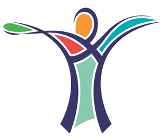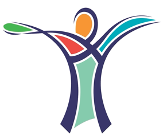Infographic: Type of physical exercises recommended to improve balance and gait in older adults with a history of falls
DOI:
https://doi.org/10.20338/bjmb.v16i2.304Keywords:
Physical exercise, Older adults, Falls, Gait, BalanceAbstract
Aging is a dynamic process associated with declining physical performance and progressive impairment of muscle strength, balance and mobility. A common result of these impairments is falling, important event that leads to activity limitations, restriction of social participation and a worse quality of life for the older adults. The systematic review made by Teng, Gomersall, Hatton and Brauer (2020) 1 shows that impaired gait and balance are risk factors for falling, but their effects can be reduced by exercise. Therefore, the aim of the infographic is to recommend the main exercise to improve balance and gait in older adults with a history of falls and its benefits.
For the selection of exercises indicated in the infographic, four systematic reviews of randomized controlled trials were used. Multicomponent exercises seem to be able to reduce the rate and risk of falls in the older adults 2-4, as well as to improve gait. The exercises must involve gait training, such as, walking multidirectional and obstacle negotiation exercises with different levels of difficulty throughout the training 2-4. Moreover, it is important to include functional activities, for example, gait with different speeds, sit and get up, walking upstairs training and dancing exercise 2-4. It's interesting to include motor coordination exercises, through the ball games and team games, strengthening for abdomen, upper, and lower limb muscles and exercises using body weight 4 as well as balance training, like standing on the one leg, balance-jumping and agility training 2-4. Yet, balance exercises that involve unstable bases also appear to reduce the risk and rate of falls, as a consequence, it improves gait speed in older people with a history of falls 1.
Moreover, the recommended intensity for exercise training is moderate (defined as any physical activity that consume 3 to 5.9 METs) and the duration of each training session proposed is one hour 3,4. As for the prescription, it is recommended significant doses of exercises, with a frequency per three hours or more for a week for a period of 6 months. Yet, it is necessary the constant practice of physical exercise to maintain the benefits acquired by the training 3.
For future studies, a relativization of dose-response effect adjusted for age, comorbidities and past falls can be necessary. Finally, more extended follow-ups to verify the sustained effect of exercise should be needed for understanding its long-term benefits.
Downloads

Downloads
Published
How to Cite
Issue
Section
License
Copyright (c) 2022 Gabriela V. Magalhães, Juliana A. Silva, Mathaeus H. S. Pereira, Natalia M. Rinaldi

This work is licensed under a Creative Commons Attribution-NonCommercial-NoDerivatives 4.0 International License.
Authors must declare that the work submitted is their own and that copyright has not been breached in seeking its publication. If the manuscript includes work previously published elsewhere, it is the author(s) responsibility to obtain permission to use it and to indicate that such permission has been granted.
Authors retain the copyright of their paper and grant the Brazilian Journal of Motor Behavior (BJMB) the right to first publish the work under a Creative Commons Attribution-NonCommercial-NoDerivatives license (CC BY-NC-ND). This license allows users to share the paper given the appropriate credit to the author and source and does not allow commercial uses and derivative materials to be produced.


























